
The 'Guernica' painting by Picasso, Reina Sofia National Art Museum Stock Photo, Royalty Free
Guernica, a large black-and-white oil painting executed by Spanish artist Pablo Picasso in 1937 following the German bombing of Guernica, a city in Spain's Basque region.
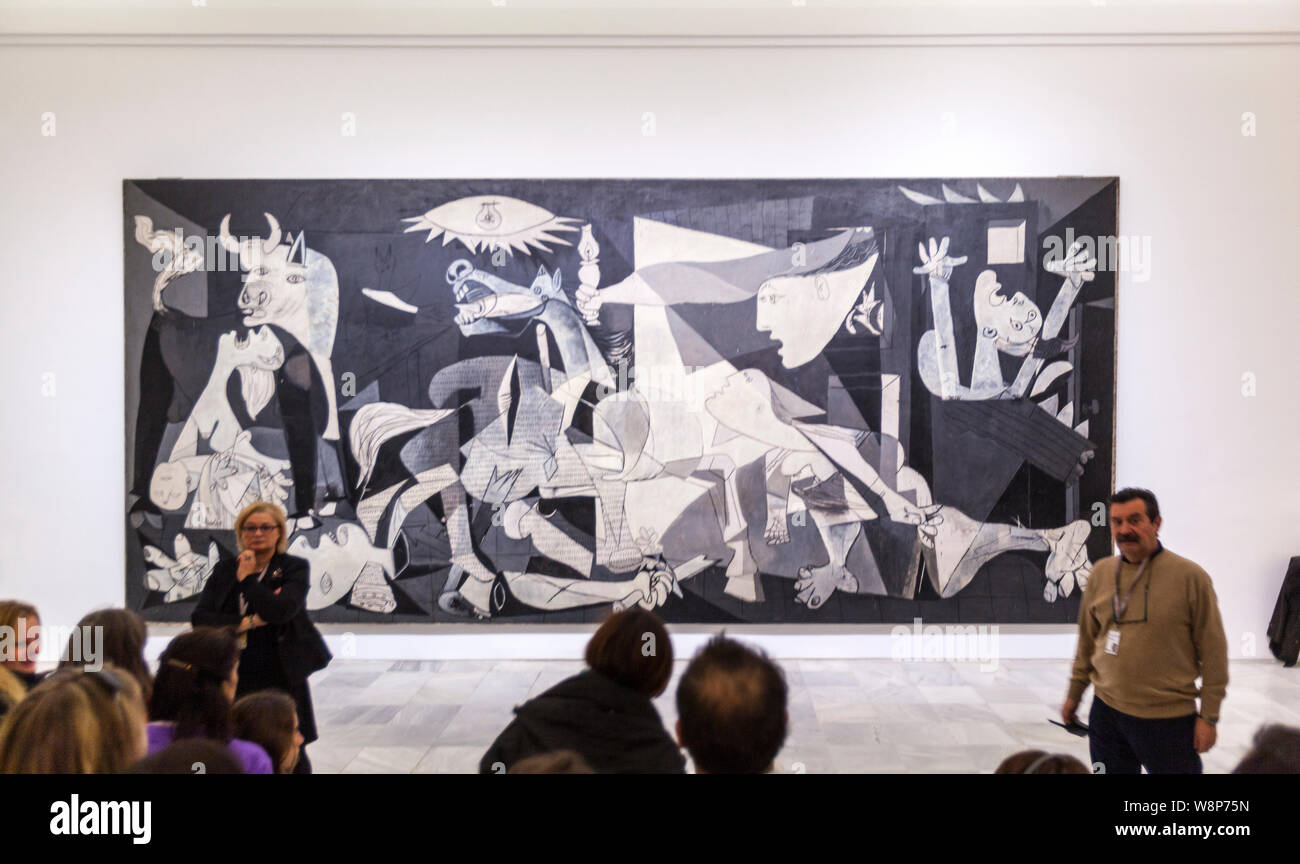
People looking the Guernica painting by Pablo Picasso. Museo Reina Sofía is Spain's national
Picasso's painting depicts the bombing of the Basque town of Guernica on April 26, 1937. Franco's German and Italian allies in the Spanish Civil War carpet-bombed Guernica, a stronghold of.
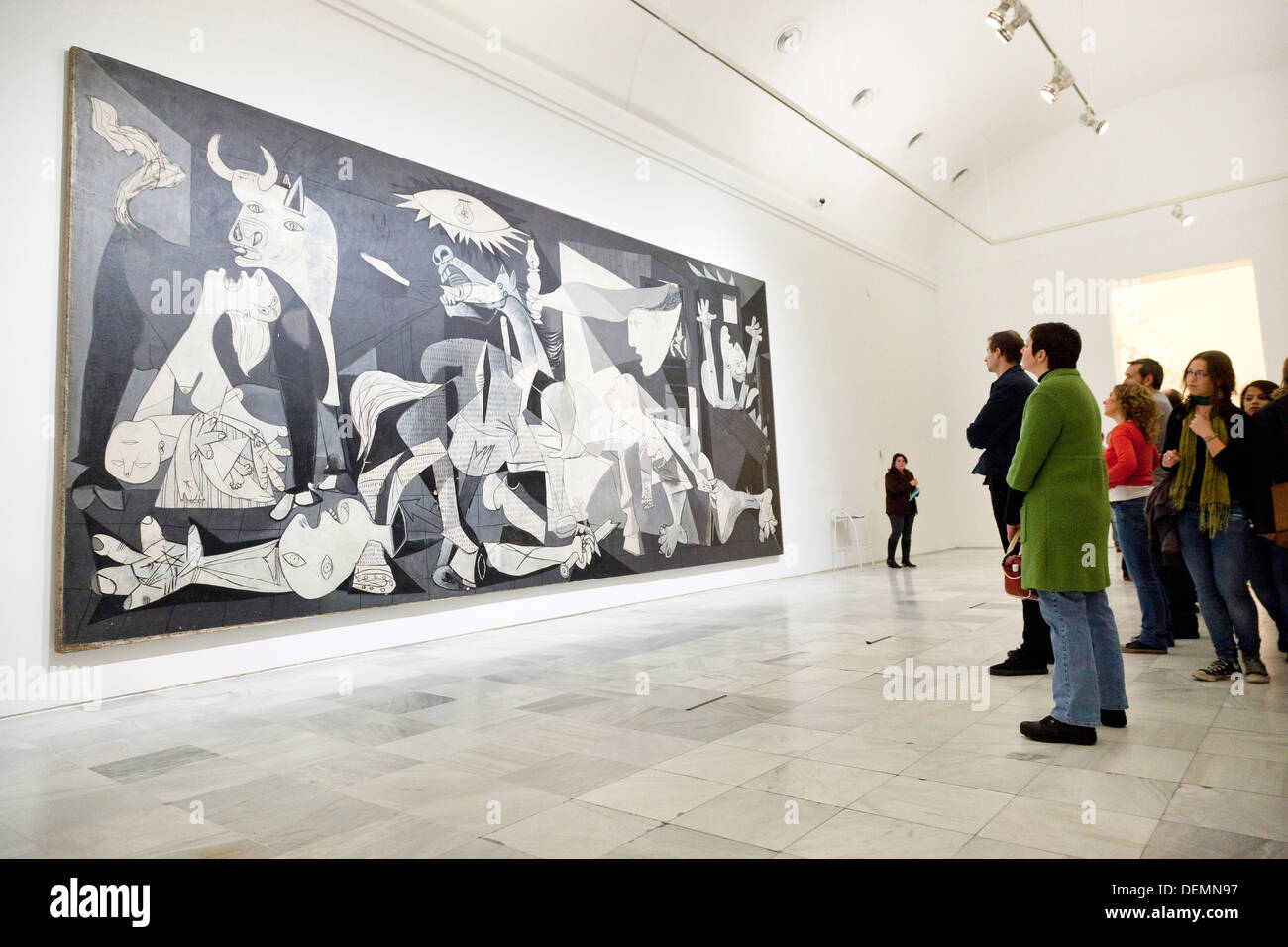
The ´Guernica´ painting by Picasso, Reina Sofia Museum, Madrid, Spain Stock Photo 60692051 Alamy
Since it was first unveiled to the public at the Spanish Pavilion in Paris, 1937, Guernica travelled extensively around Europe and the Americas, before being sent to Spain in 1981, where it was housed in the Casón del Buen Retiro and, from 1992, in the Museo Reina Sofía.

Pablo Picasso. Guernica. 1937. Oil on canvas. 137.4 in x 305.5 in. Museo Reina Sofia. Madrid
Guernica is blue, black and white, 3.5 meters (11 ft) tall and 7.8 meters (25.6 ft) wide, a mural-size canvas painted in oil. This painting can be seen in the Museo Reina Sofia in Madrid. Interpretations of Guernica vary widely and contradict one another. This extends, for example, to the mural's two dominant elements: the bull and the horse.

29+ guernica museum of modern art BroganJaachi
This guided tour surveys the rooms of the Museo Reina Sofía Collection housing Pablo Picasso's Guernica and framing its historical context, inviting visitors to think about how and why the work has become a political symbol of the end of Spain's Transition to democracy and a timeless, universally recognised icon.
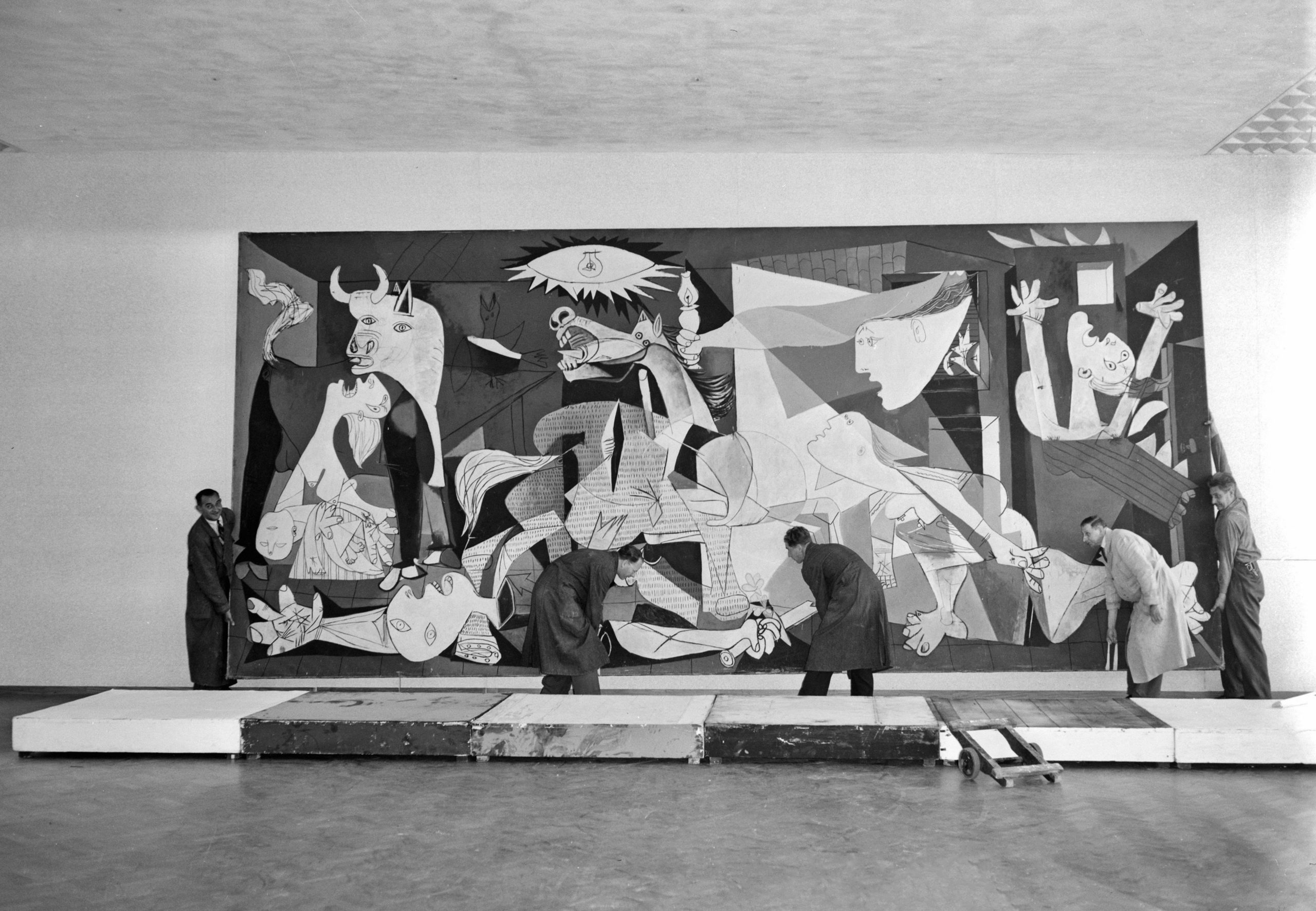
Picasso’s Guernica Everything you need to know
Guernica ( Spanish: [ɡeɾˈnika]; Basque: [ɡernika]) is a large 1937 oil painting by Spanish artist Pablo Picasso. [1] [2] It is one of his best-known works, regarded by many art critics as the most moving and powerful anti-war painting in history. [3] It is exhibited in the Museo Reina Sofía in Madrid. [4]
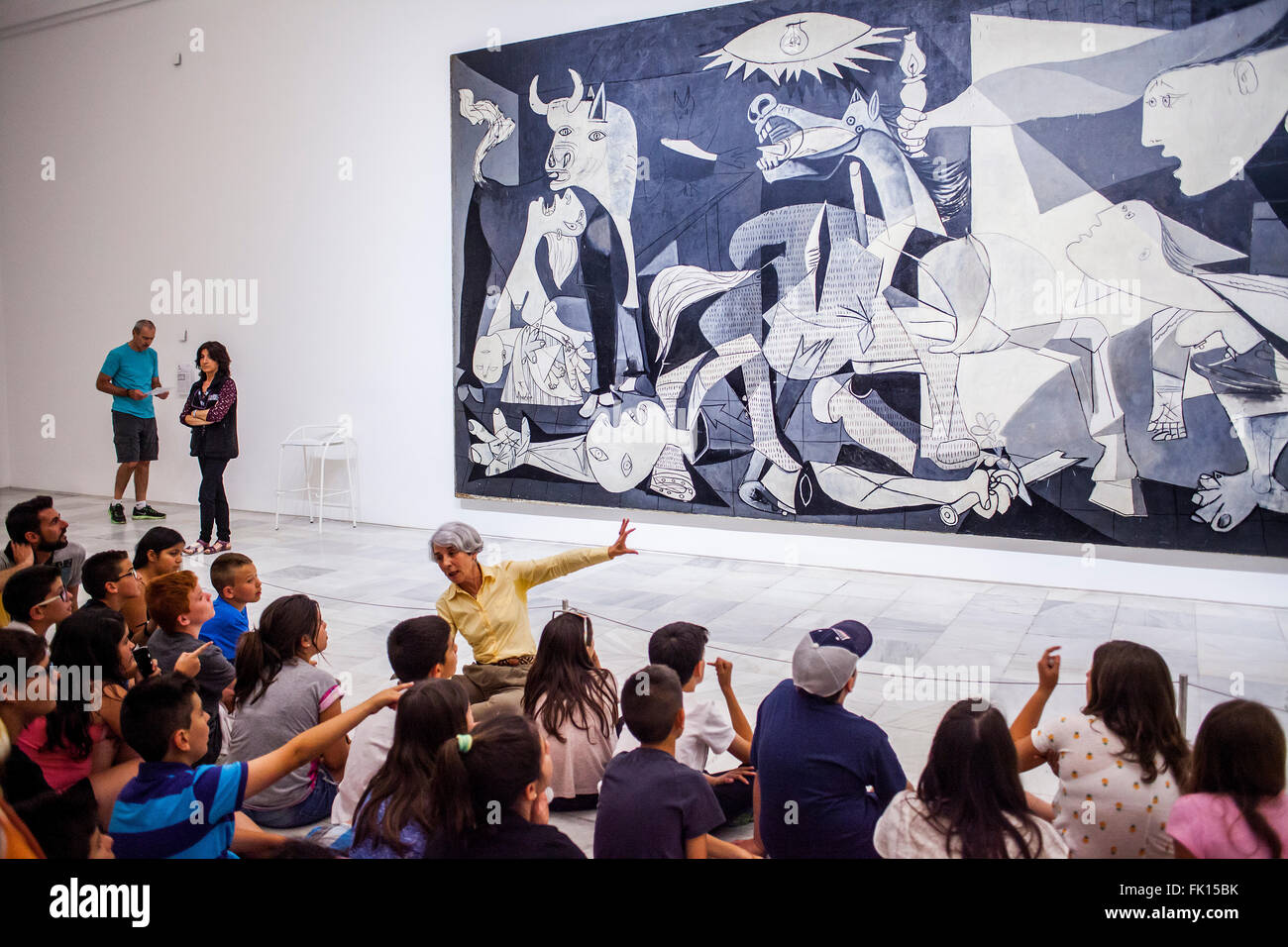
The 'Guernica' painting by Picasso, Reina Sofia National Art Museum, Madrid, Spain Stock Photo
October 2004 The artistic genius of Pablo Picasso (1881-1973) has impacted the development of modern and contemporary art with unparalleled magnitude. His prolific output includes over 20,000 paintings, prints, drawings, sculptures, ceramics, theater sets and costumes that convey myriad intellectual, political, social, and amorous messages.

The 'Guernica' painting by Picasso, Reina Sofia National Art Museum, Madrid, Spain Stock Photo
Later, the painting was sent to the United States to help raise funds for Spanish refugees. Picasso said that Guernica should only be returned to Spain once it had reestablished a republic. Finally, in 1981, the monumental piece was transferred back to its home country. Today, it can be seen at the Reina Sofía Museum in Madrid. Related Articles:
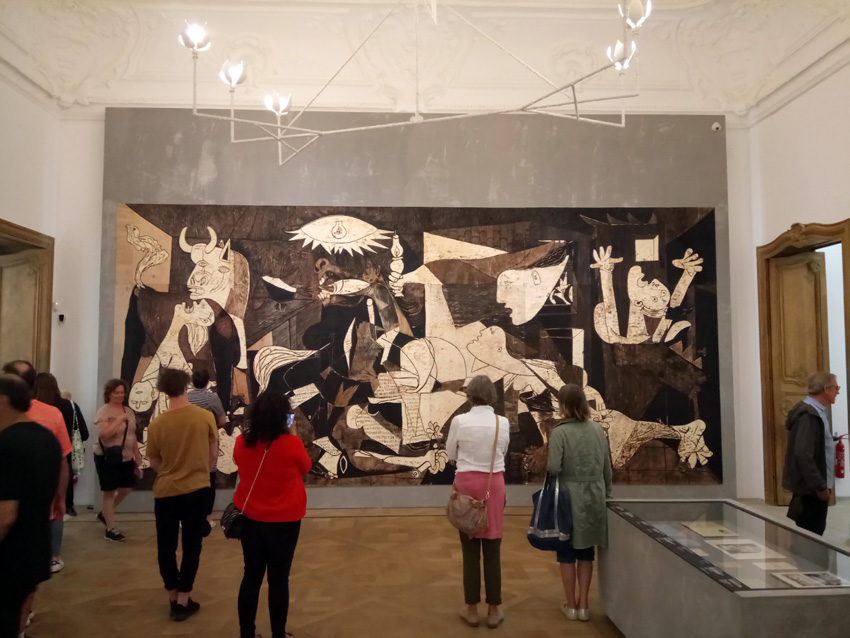
Guernica at Picasso Museum RISSC London
Picasso's Guernica painting depicts the atrocities of war and is the world's most powerful anti-war painting. Discover what makes it so powerful.. In 1981, after being kept for safekeeping at the Museum of Modern Art in New York City, the painting was returned to Spain in 1981. Picasso had stipulated that the painting could not return to.

GuernicabyPabloPicassoinAmsterdambeinghungintheMunicipalMuseum12thJuly1956
Created for the Spanish Republic's pavilion at the 1937 Paris International Exposition of Art and Technology in Modern Life, or the World's Fair, for short, Guernica measures an enormous 11.5 feet tall by 25.5 feet long (349.3 x 776.6 cm).

Picasso’s ‘Guernica’ Exhibition History and Life as AntiWar Symbol
Spanish artist Pablo Picasso's monumental anti-war mural Guernica is received by Spain after four decades of refugee existence on September 10, 1981. One of Picasso's most important works, the.

A Creative Journal of an Artist Guernica by Pablo Picasso
A brief history. At Picasso's request, the custody of Guernica was entrusted to the Museum of Modern Art, and it was his express wish that the painting not be delivered to Spain until freedom and democracy had been established in the country. Between 1939 and 1952, Guernica traveled extensively in the United States.

Picasso’s famous antiwar painting Guernica resonates even after 80 years art and culture
Home Guernica From 27 February to 29 July 2018 Guernica Pablo Picasso, « Étude pour "Guernica" (Tête de cheval) », 2 mai 1937, Huile sur toile, 64 x 90,5 cm, 65 x 92, Musée national centre d'art Reina Sofia Succession Picasso 2020 About the exhibition

80 years of the creation of Guernica. Pity and Terror. Picasso’s Path to Guernica The Strength
Guernica Pablo Picasso (Pablo Ruiz Picasso) Malaga, Spain, 1881 - Mougins, France, 1973 Date: 1937 (May 1st-June 4th, Paris) Technique: An accurate depiction of a cruel, dramatic situation, Guernica was created to be part of the Spanish Pavilion at the International Exposition in Paris in 1937.
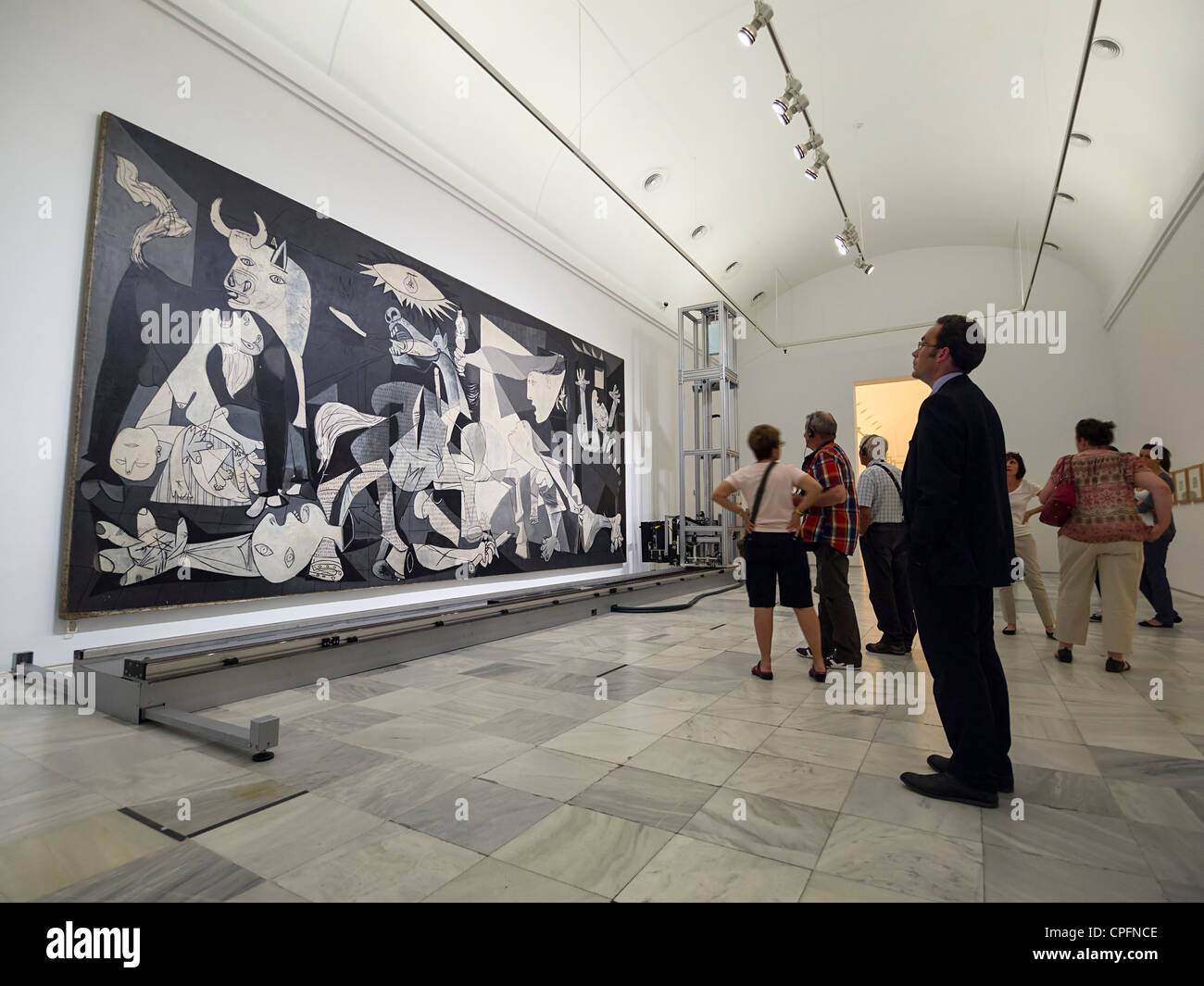
Visitors looking at "Guernica" painting by Pablo Picasso at the Reina Sofia modern art museum in
May 7, 2020 12:32pm Picasso's Guernica at the Museo Reina Sofia in Madrid. Chema Moya/EPA/Shutterstock At 11 feet tall and 25 feet long, Pablo Picasso 's mural Guernica is one of the biggest.

Pablo Picassos Guernica In Reina Sofia National Art Museum With Visitors In Foreground Foto de
Jonathan Lorie Wed 5 Apr 2017 01.30 EDT 71 P ast the handgun factory that has become an arts centre, behind the rebuilt station with its shiny statue of the first Basque president, there's a long.